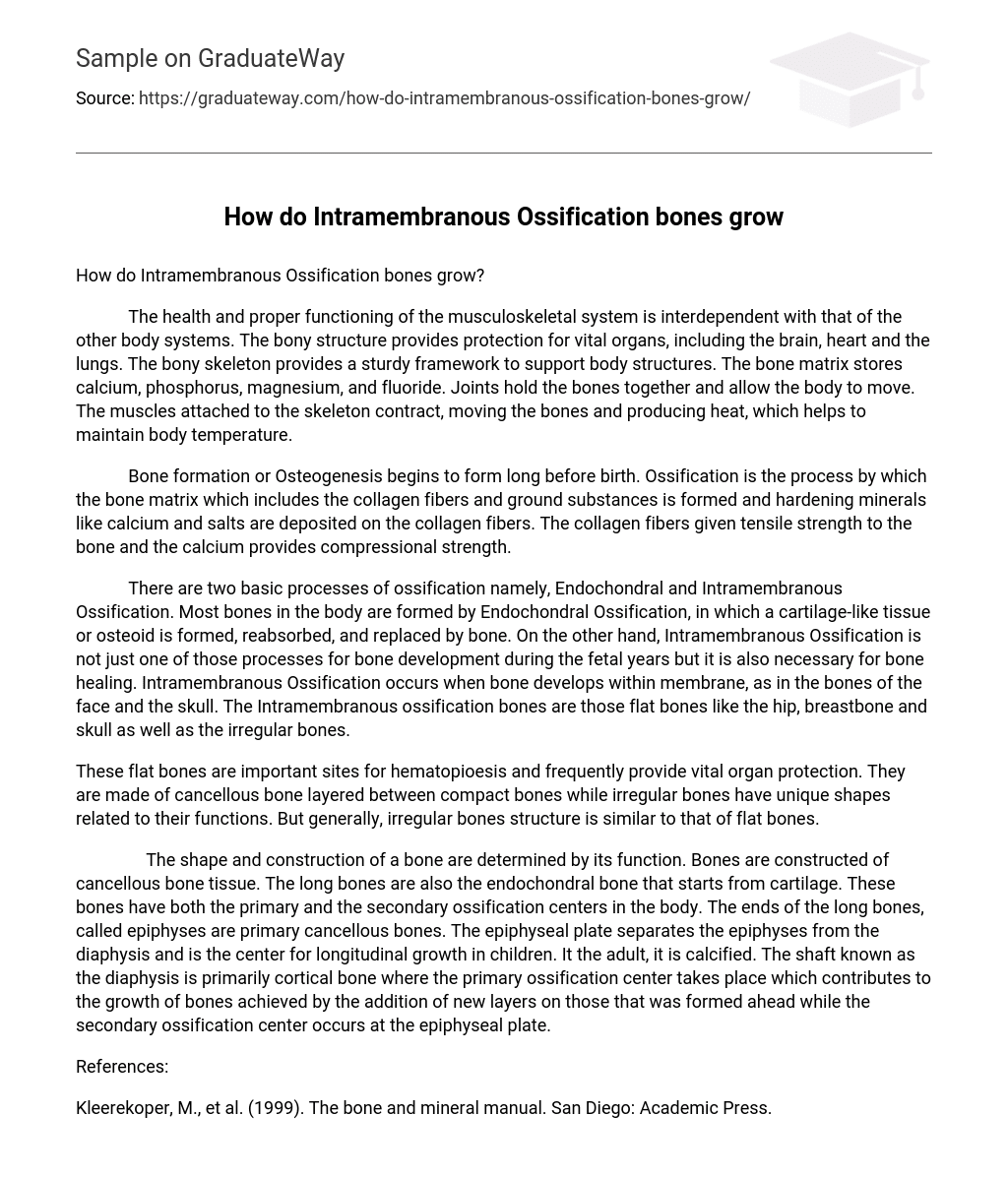The health and proper functioning of the musculoskeletal system is interdependent with that of the other body systems. The bony structure provides protection for vital organs, including the brain, heart and the lungs. The bony skeleton provides a sturdy framework to support body structures. The bone matrix stores calcium, phosphorus, magnesium, and fluoride. Joints hold the bones together and allow the body to move. The muscles attached to the skeleton contract, moving the bones and producing heat, which helps to maintain body temperature.
Bone formation or Osteogenesis begins to form long before birth. Ossification is the process by which the bone matrix which includes the collagen fibers and ground substances is formed and hardening minerals like calcium and salts are deposited on the collagen fibers. The collagen fibers given tensile strength to the bone and the calcium provides compressional strength.
There are two basic processes of ossification namely, Endochondral and Intramembranous Ossification. Most bones in the body are formed by Endochondral Ossification, in which a cartilage-like tissue or osteoid is formed, reabsorbed, and replaced by bone. On the other hand, Intramembranous Ossification is not just one of those processes for bone development during the fetal years but it is also necessary for bone healing. Intramembranous Ossification occurs when bone develops within membrane, as in the bones of the face and the skull. The Intramembranous ossification bones are those flat bones like the hip, breastbone and skull as well as the irregular bones.
These flat bones are important sites for hematopioesis and frequently provide vital organ protection. They are made of cancellous bone layered between compact bones while irregular bones have unique shapes related to their functions. But generally, irregular bones structure is similar to that of flat bones.
The shape and construction of a bone are determined by its function. Bones are constructed of cancellous bone tissue. The long bones are also the endochondral bone that starts from cartilage. These bones have both the primary and the secondary ossification centers in the body. The ends of the long bones, called epiphyses are primary cancellous bones.
The epiphyseal plate separates the epiphyses from the diaphysis and is the center for longitudinal growth in children. It the adult, it is calcified. The shaft known as the diaphysis is primarily cortical bone where the primary ossification center takes place which contributes to the growth of bones achieved by the addition of new layers on those that was formed ahead while the secondary ossification center occurs at the epiphyseal plate.
References
- Kleerekoper, M., et al. (1999). The bone and mineral manual. San Diego: Academic Press.
- Kozier B., Erb G., Blais K., Wilkinson J. M. (2002). Fundamentals of nursing: Concepts process and practice (5th Ed.). Singapore: Pearson Ed. Asia Pte. Ltd.
- Maher, A., et al. (1998). Orthopaedic Nursing (2nd Ed.). Philadelphia: W. B. Saunders.
- Smeltzer, Suzanne, and Brenda G. Bare. (2004).Medical- Surgical Nursing. Lippincott Williams & Wilkins.





